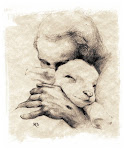
Thursday's Therapy
Violent Death: Restorative Re-Telling
Part Three
Reenactment and Possession
Warning:
In tonight's blog post, we are continuing to discuss violent death, so we will follow the path of Dr. Rynearson's first learning of his wife's suicidal death on into his beginning path of recovery. The telling of his story is by its own nature graphic and can stir up reminders or triggers to some of you of your own violent loss of your child. Please discern for yourself whether you are ready possibly to be triggered in such a way before reading on.
Dr. Edward Rynearson's story:
The Public Story of Her Dying
December 6, 1974 On December 4th the Bainbridge Island Police Department reported the disappearance of Mrs. Julie Rynearson. It is believed that she jumped from a ferry en route to Seattle. A body was sighted by a passenger but not recovered. The Coast Guard searched the area, but no trace of her was found.
The Reenactment Story
...In the days and weeks after her dying (and the soothing comfort of friends and family who had gathered for her funeral) that specter of death returned. My awareness of her suicide brought such terror and despair that my own survival story was forgotten. Each time my awareness of Julie's suicide returned, it would follow my imaginary reenactment of the last moments of her living. Once the procession of scenes began to unfold, I could do nothing to interrupt. It was like a series of spotlighted scenes drawn from one side of my mind to the other:
She walks down the ramp to the ferry and sits alone.
Now that she has written a note, she doesn't want anyone in her way.
When the island becomes a distant margin, she is ready to leave.
She walks to the lower deck and through the parked cars to the stern.
Drawing her brown, wool coat about her, she jumps into the wake.
Merged in this drama, I would imagine what she thought and felt. This imagining was an endless questioning that wouldn't stop. There was no questioning what she had done, but there seemed no limit to my imagining her last thoughts and feelings.
What went through her mind as she stood on the stern?
Was she saying goodbye to the kids and me before she jumped?
Was she welcoming the release of her drowning and the water?
What went through her mind after she jumped?
Was she frightened by the coldness and suffocation?
Did she scream for help because she realized this was a mistake?
What went through her mind as she died?
Did she feel a calmness and a transcendence as she became unconscious?
Was she hoping and searching for awareness beyond her dying.
How could I expect others to understand these imaginary eruptions? I kept them secret, as they kept me from maintaining my concentration during the day and kept me awake at night. I would awake, crying and terrified as I witnessed Julie disappearing in the wake of the ferry. It would take me hours to calm myself so I could get back to sleep. There seemed to be no time or space for my mind to rest.
Now, many years later, I recognize that the reenactment fantasies after Julie's dying were fundamental to forming a story. Seeing and hearing are my primary senses for communicating an experience--with others and my own imagination, as well. The imaginative elements of the story I first fashioned around Julie's violent dying required me to "see" and "hear" what happened. Under ordinary conditions, I recognize some boundary between who I am and what I am imagining. This differentiation allows me to experience the concrete and imaginary at the same time. Under the extraordinary condition of reliving Julie's suicide, I could not differentiate myself from my imaginary story...
In those early weeks after her dying, that reenactment story was so autonomous and powerful that I seemed possessed. {Possession: an almost losing a sense of one's own person in the overwhelming trauma of the death of one's loved one} "Possession" suggests that the experience of my imaginary story at first generated its own energy and drama. Being "possessed" was a helpless experience.... At first I could only witness the story. The story needed my voice, but like an oracle, the story came from some source outside my control.
*****
{Beginnings of his restorative retelling of his wife's violent death:}
By allowing myself a participation (via an imaginary role) in her dying, I began to tell the story from a different perspective. I heard my own voice saying to Julie,
"Don't do this to yourself, or me."
"Damn it, you promised you wouldn't do this."
"I should have stopped you and protected you."
"I never had a chance to say goodbye to you."
Each of these imaginary voices included me as assertive, angry, remorseful, and finally caring. It was as if my mind let me participate by attempting a dialogue with Julie as she was dying.
In giving myself a voice, I wouldn't disintegrate with her in the dying story.
These imaginary dialogues were preludes to a series of stories in which I would try to save her from dying, or rage at her for dying, or blame myself for her dying, or hold and comfort her as she was dying--and there were many more. These imaginary, private stories were woven into a shroud of narratives that surrounded and cushioned the drama of her violent dying.
They were interconnected, so I had simultaneous voices and roles to keep me from disappearing into the "black hole" of her dying where she had disappeared.
****
Next week, I hope to discuss the "Resilience" Factor of stabilizing oneself for developing a restorative re-telling of your child's death. Meanwhile, I will leave you with this quote (from Dr. Rynearson's book: Retelling Violent Death) about parents who lose their children:
Since the caring connection is fundamental to retelling, it is not surprising that of all family members, parents are most vulnerable to reenactment and possession.
Parents, and particularly mothers, may have a prolonged and painful response to the violent death of their child, whatever the age (Rosenblatt, 2000).
Family members are left with a final narrative dilemma of joining this story of violent dying to the story of their own life. Violent dying is not only a tragic and unacceptable ending to the life story of the deceased, but is carried forward as a chaotic and unacceptable ending of vitality and identity in the continuing life story of the teller (Frank, 1995; Harvey, 2000; Neimeyer & Levitt, 2000).
Retelling this broken life-narrative cannot be seamless, because the life of the teller in that shared narrative has ended as well. When a loved one dies violently, the nurturing connection with the memory and future life of the deceased remains torn and ingrained....
*****
In summary...
Rynearson then explains the need for a "Restorative Retelling" of violent dying:
My memory of Julies' life carries the discordant tone of her dying. Whenever I remember the way she died, I am left with a life story that cannot be finished. I'll never be able to tell that story with an ending that is meaningful or instilled with value, because I find no meaning or value in violent death.
But in reestablishing who I was in her life, I am reconnected with my memory of our lives together and that returns me to a time and space of meaning and value.
Helping someone after a violent death begins by restoring the living presence of whoever died. (When I questioned him,) I needed Julie's therapist (not to inanely analyze why she might have chosen to die - all unanswerable questions that merely lead to despair, but) to restore (her) living presence (to me).
I needed Julie's therapist to rekindle our memory of Julie as a valued person whose living was of far more significance than her dying.











































No comments:
Post a Comment